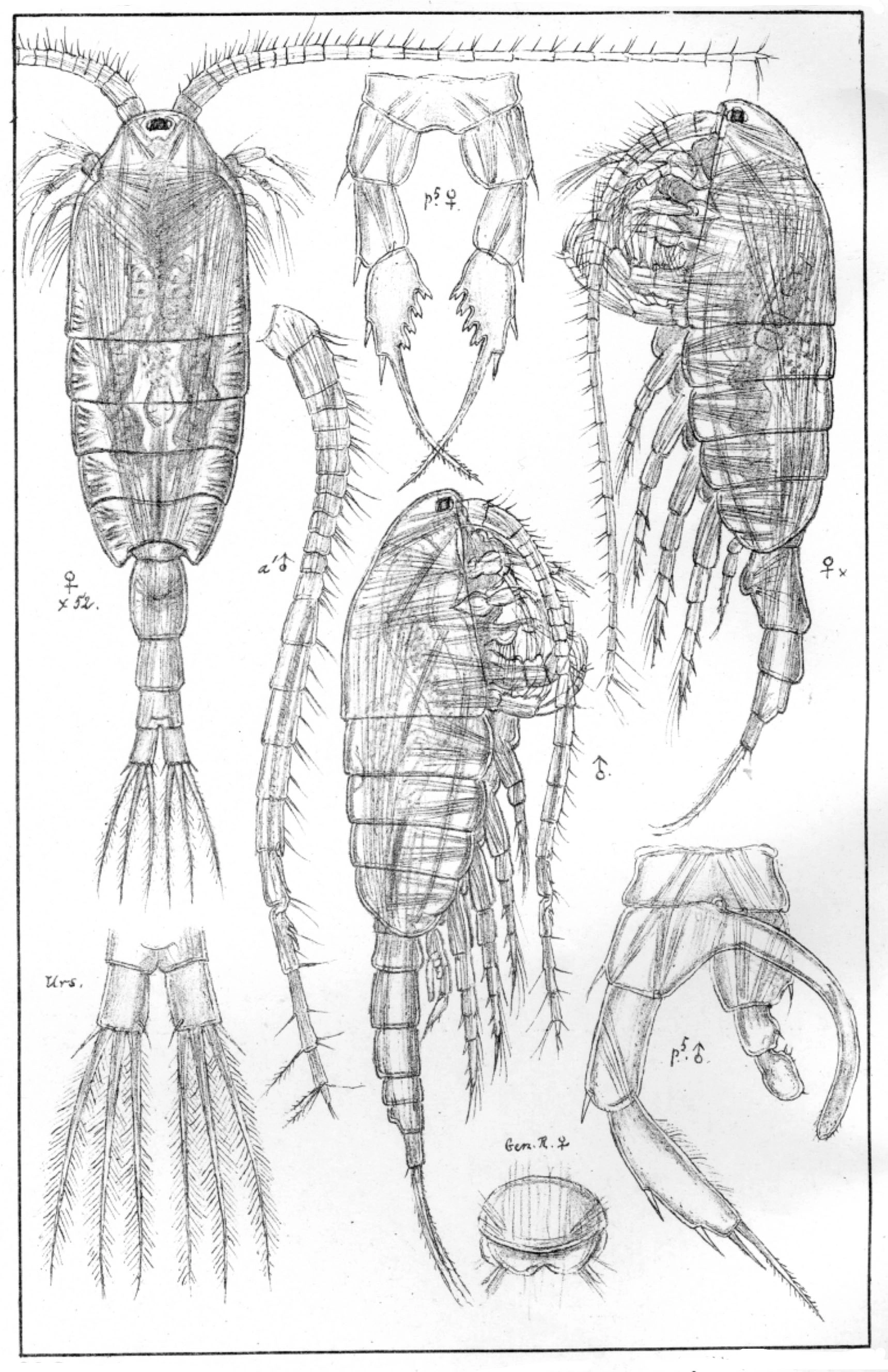Heterocope saliens
Heterocope saliens is the most common calanoid copepod. The possibility to find this robust and beautiful colored animal, decrease northwards and towards the Swedish border.
Key characteristics
Heterocope saliens (female)
Heterocope saliens is larger and more robust than H. appendiculata, and slightly less robust compared with H. borealis. Adult females of H. saliens and H. appendiculata can easily be distinguished because of the row of appendages in front of the genital orifice in H. appendiculata which is not found in H. saliens. Further, the antennas differ in length in the two species, reaching somewhat beyond the second abdominal segment in H. saliens while they reach beyond the tail in H. appendiculata. Its body is generally of a beautiful ultramarine hue while antennas, oral parts and urosome often are tinged with a dark orange colour.
Female: Length 2.5–3.2 mm
Male: Length 2.2–2.8 mm
Ecology and distribution
H. saliens is the most common calanoid copepode, and is found in water bodies of all sizes from sea level and up to the alpine zone (1444 m a.s.l.). It is distributed northwards to Andøya (Troms county), having a more scattered occurrence in the north and along the border to Sweden than elsewhere. It is acid tolerant and occurs in more than half of the water bodies when pH<5.5. When pH>7.5 it is only found in about 5 % of the localities. The possibility to find H. saliens decreases slightly when the level of electrolytes increases.
| Vitenskapelig navn | < 4,5 | 4,5 - 4,9 | 5,0 - 5,4 | 5,5 - 5,9 | 6,0 - 6,4 | 6,5 - 7,0 | 7,0 - 7,4 | > 7,5 |
|---|---|---|---|---|---|---|---|---|
| 73,6 | 69,5 | 54,1 | 36,6 | 31,7 | 31,1 | 27,1 | 4,5 |
| Vitenskapelig navn | < 1,0 | 1,0 - 1,4 | 1,5 - 1,9 | 2,0 - 2,9 | 3,0 - 3,9 | 4,0 - 4,9 | 5,0 - 6,9 | 7,0 - 9,9 | > 10,0 |
|---|---|---|---|---|---|---|---|---|---|
| 53,4 | 61,6 | 48,8 | 41,8 | 45,6 | 34,7 | 30,2 | 17,7 | 11,4 |
| Vitenskapelig navn | < 0,01 | 0,01 - 0,09 | 0,1 - 0,9 | 1,0 - 9,9 | 10,0 - 99 | 100 - 999 | > 1000 |
|---|---|---|---|---|---|---|---|
| 0 | 30,6 | 54,3 | 44,1 | 32,7 | 34,2 | 33 |
| Vitenskapelig navn | < 100 | 100-299 | 300-499 | 500-699 | 700-999 | >1000 |
|---|---|---|---|---|---|---|
| 25,4 | 23 | 38,2 | 55,4 | 65,9 | 41,1 |
Look alikes
Heterocope borealis

